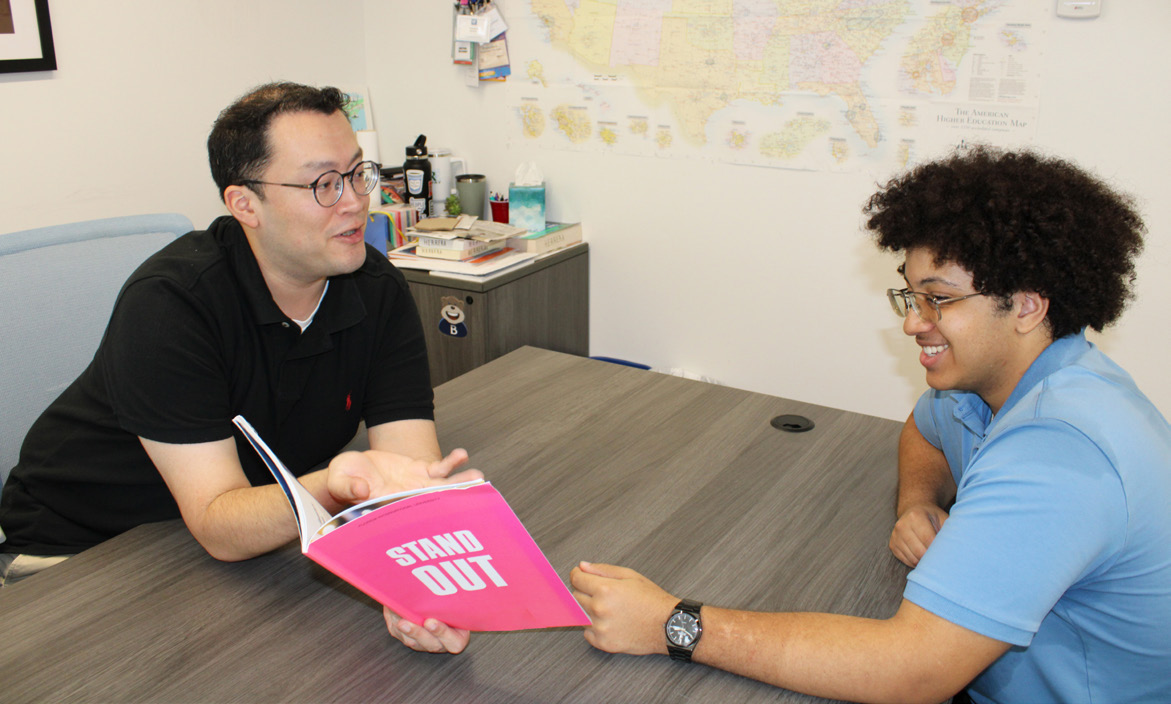At Ransom Everglades, many define the value and success of their education by one metric: the universities they’re accepted to. While most students fixate on Ivy League and Top 20 universities, a small but growing number are choosing a different path: liberal arts colleges.
“We’ve been blinded by the mystique of Ivy and Ivy-plus schools,” said Director of College Counseling Mr. Patrick Tassoni. “They just have such gravity, and they get so much attention… It’s become sort of this unconscious standard that students and parents feel they need to meet. Otherwise, you know, it’s not worth it.”
Recent data from Ransom Everglades reveals just how few students have opted to attend liberal arts colleges in recent years. In the Class of 2024, 10 out of 144 students chose liberal arts colleges. The previous year’s Class of 2023 saw a similar trend, with 11 out of 148 students selecting liberal arts institutions. This list of schools includes Bowdoin College, Barnard College, Middlebury College, Macalester College, and more.
Notably, in both recent graduating classes, a significant number of the liberal arts college attendees were recruited athletes—4 students in 2024 and 2 in 2023.
Although the Class of 2025 is still in the throes of the college application process, by all accounts, the pressure to apply to large research universities has not abated.
As Jilly Demos-Brown ’25 candidly observed, “I feel like there’s an expectation for Ransom students to get into and go to very good schools. And then I feel like there’s a lot of comparison among students. So I think that the college process and picking a school is driven not only by one’s own desires but also their desire of how other people perceive them.”
Miguel Kumar ’25 stands out in this landscape as one in a small contingent of students choosing the less-common liberal arts route. “Out of all of my friends and classmates I’ve talked to about colleges, no one else is applying to mainly liberal arts colleges,” he explained. “They’re just as good and competitive as larger universities, just different.”
Proponents of liberal arts colleges argue that their benefits extend far beyond graduation thanks to their emphasis on critical thinking and interdisciplinary study. Instead of viewing classmates as rivals for top grades or prestigious internships, students often find themselves part of a collaborative community where intellectual curiosity trumps competitive pressure, and learning is valued for its own sake.
“You get to have your voice heard and go do whatever it is that you want to do without the limitations of having to navigate a huge school where the professors don’t know you as well,” Kumar said. “You can’t shine in a 300-person lecture hall like you can in a discussion.”
Joy Lagrutta, a Joy and Wellness Counselor at the College of the Holy Cross, witnesses firsthand how liberal arts colleges provide an alternative to the numbers-driven admissions race. “Many of the students I meet talk about how they feel seen—not just as learners but as people,” she explained. “When students know they have personal relationships with faculty, they’re more comfortable reaching out when they hit a rough patch—whether that’s academic, emotional, or personal.”
Liberal arts colleges’ emphasis on personal growth and engagement contrasts with the competitive atmosphere at larger institutions—which RE seniors are already previewing as they quietly compare stats. “You have to wonder: who is my direct competition at this school?” said Paloma Lopes ’25, describing the atmosphere surrounding applications to prestigious research universities.
Still, some remain skeptical of liberal arts colleges, viewing them as less prestigious or potentially limiting in terms of future career opportunities. Parents often worry about the return on investment and networking potential compared to larger research universities, viewing them as potentially limiting.
“As someone interested in STEM, a huge factor for my decision is research opportunities. I think these are best found at larger schools with more robust resources and funding,” said Sofia Rakhimi ’25.
Demos-Brown believes that a larger university will allow her greater opportunities to explore broader interests. “I think our generation as a whole is very indecisive. And personally, I don’t know what I want to do. So I think the opportunity to just kind of not have to do something specific is very appealing.”
The choice between liberal arts colleges and larger universities presents students with a critical dilemma: intimate learning environments, or expansive resources and reputability?
Those who have opted for the liberal arts path argue that it offers a promise that often gets lost in the chase of prestige: four years of genuine engagement and growth. As Kumar put it, “They act like those four years are the end and just getting in is it. But that’s not even a quarter of your life. And it’s better to enjoy those four years doing something that you’ll actually enjoy than just to have a nice little name on your resume.”
For now, Lagrutta has some advice for students caught in the crossfire of college admissions pressure. “I’d say, focus on what you want, not just what looks impressive. It’s easy to get caught up in rankings or where your peers are applying, but you’ll be happiest at a place that fits who you are.”










